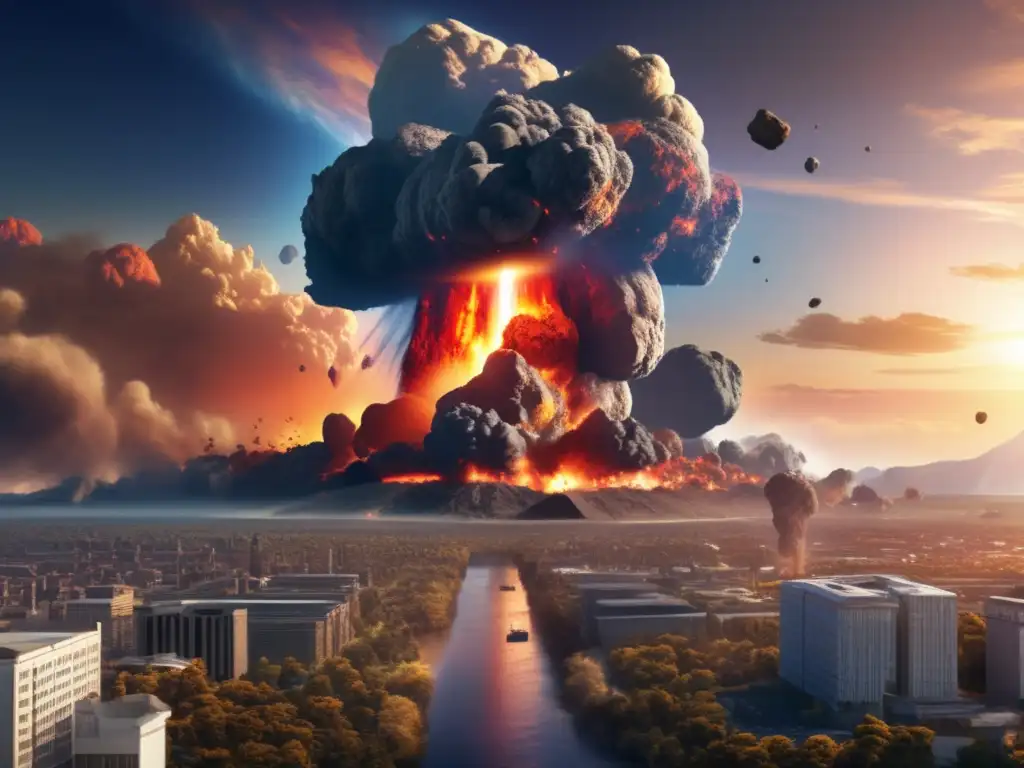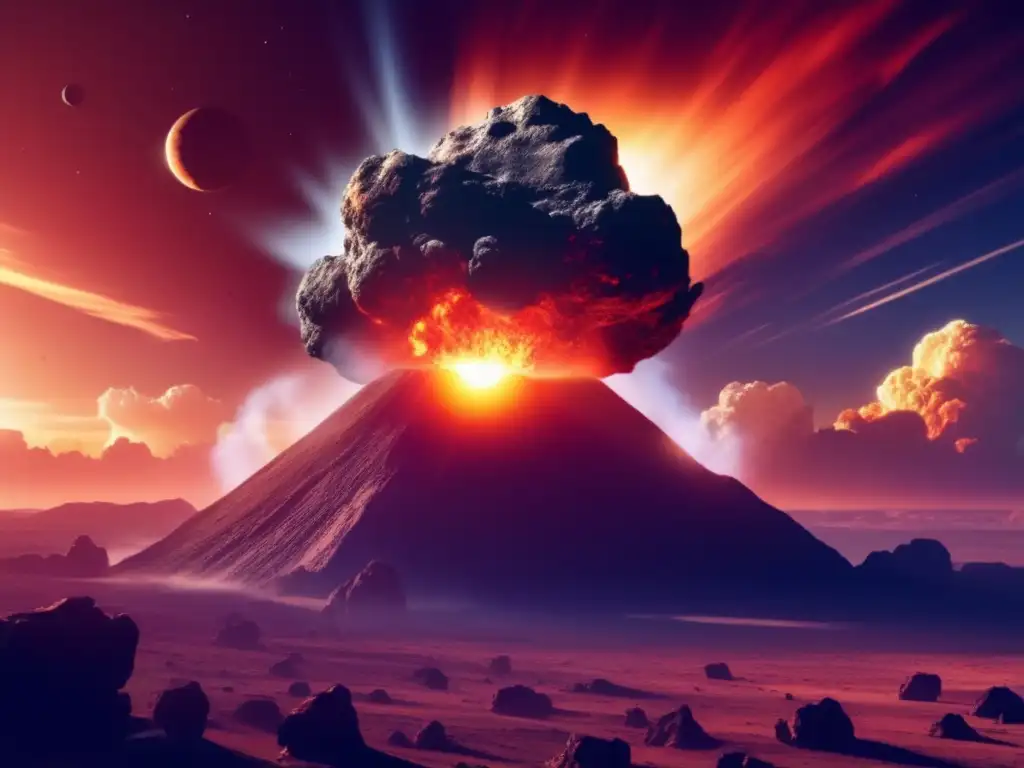The Sky Is Falling: Myth And Reality Of Asteroid Impacts

Introduction
Asteroids, also known as minor planets, are small rocky or metallic bodies that orbit the sun. They range in size from a few meters to hundreds of kilometers and can be found throughout our solar system. Asteroids have been a source of fascination for humans for centuries, inspiring myths, legends, and even movies.
One of the most significant events associated with asteroids is their impact on Earth. The possibility of an asteroid impact causing mass extinction is a hot topic in the scientific community and popular culture. In this article, we will explore the myths and reality of asteroid impacts and their significance.
History of asteroid impacts

The Tunguska Event
The Tunguska event is one of the most significant asteroid impacts in recorded history. On June 30, 1908, an asteroid exploded over the Tunguska River in Siberia, Russia. The explosion flattened trees over an area of 2,000 square kilometers and released energy equivalent to 10-15 megatons of TNT. This event was significant in raising the awareness of the potential danger of asteroids impacting the Earth.
Chicxulub Impact
The Chicxulub Impact is the most famous and significant asteroid impact on Earth. It is believed that this event caused the mass extinction of the dinosaurs, as well as many other species, more than 65 million years ago. The Chicxulub crater is approximately 180 km in diameter and located on the Yucatan Peninsula in Mexico.
Recent asteroid impacts
Although asteroid impacts are rare, they do happen. In February 2013, an asteroid exploded over Chelyabinsk, Russia, releasing an energy equivalent to 500 kilotons of TNT. The explosion caused many injuries and damage to buildings in the area. Another notable asteroid impact occurred in June 2018, when an asteroid exploded over the Thule Air Base in Greenland. The explosion released an energy equivalent to 2400 tons of TNT.
The potential danger of asteroid impacts

Predicting asteroid impacts
The risk of asteroid impacts can be mitigated by identifying asteroids that have the potential to impact Earth and taking steps to prevent them. NASA's Near-Earth Object (NEO) Program detects and tracks asteroids and comets that pass within a certain distance of Earth's orbit. This program is essential in predicting potential asteroid impacts and deciding how to respond to them.
Consequences of asteroid impacts
The consequences of asteroid impacts can be catastrophic, including tsunamis, firestorms, and even mass extinction. A large asteroid impact could significantly alter the Earth's climate and create long-term environmental effects. Even small asteroids could cause massive destruction if they impact heavily populated areas.
Preventing asteroid impacts
The potential danger of asteroid impacts has led to scientific research into ways to prevent them. Methods include deflecting the asteroid's trajectory, destroying the asteroid before impact, or using gravity tractors to alter its path. Several missions, such as NASA's Asteroid Redirect Mission, are currently underway to study and develop techniques for preventing asteroid impacts.
FAQs

-
What is the likelihood of an asteroid impact on Earth?
The likelihood of an asteroid impact varies depending on the size and frequency of asteroids in our solar system. However, the chance of an asteroid with a diameter of 1 km or more impacting Earth over the next century is estimated to be approximately 0.01%.
-
Can we predict asteroid impacts?
Yes, NASA's Near-Earth Object Program detects and tracks asteroids and comets that pass within a certain distance of Earth's orbit to predict potential asteroid impacts.
-
What are the potential consequences of an asteroid impact?
The consequences of asteroid impacts can include tsunamis, firestorms, and even mass extinction events. The environmental effects of a large asteroid impact could be long-lasting and significant.
-
Can we prevent asteroid impacts?
Yes, scientific research is underway to develop methods to prevent asteroid impacts, including deflecting the asteroid's trajectory, destroying the asteroid before impact, or using gravity tractors to alter its path.
-
What is NASA's Asteroid Redirect Mission?
NASA's Asteroid Redirect Mission is a mission to study and develop techniques for preventing asteroid impacts. The mission aims to redirect a small asteroid into a stable orbit around the moon and then send a spacecraft to collect samples for study.
Conclusion
Asteroid impacts are a fascinating and potentially dangerous phenomenon that captures the imagination of scientists and the public alike. While the likelihood of an asteroid impact on Earth is relatively low, their catastrophic consequences make them an essential topic of scientific research. With continued research into detecting and preventing potential asteroid impacts, we can ensure the safety and future of our planet.
Thank you for reading this article on asteroid impacts. If you enjoyed it, please share it with others or subscribe to www.asteroidrealm.com to stay up-to-date on the latest asteroid news and research.
Additional Resources

For more information about asteroid impacts, visit:
- NASA's Planetary Defense Coordination Office
- Space.com's Asteroid News and Information
- NASA's Center for Near-Earth Object Studies
 Impacts From Above: A Chronology Of Major Asteroid Strikes
Impacts From Above: A Chronology Of Major Asteroid Strikes Asteroid Impact Sites: Geographical Wonders From Space
Asteroid Impact Sites: Geographical Wonders From Space From Meteoroids To Meteorites: The Life Cycle Of An Asteroid
From Meteoroids To Meteorites: The Life Cycle Of An AsteroidIf you want to discover more articles similar to The Sky Is Falling: Myth And Reality Of Asteroid Impacts, you can visit the Asteroid Impacts category.
Leave a Reply

Articulos relacionados: